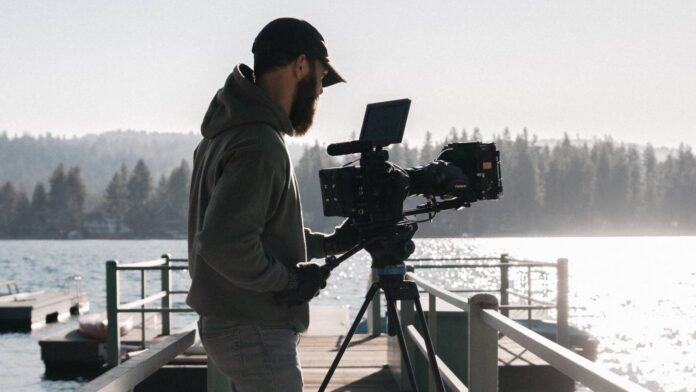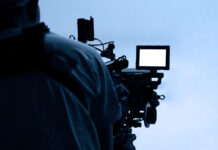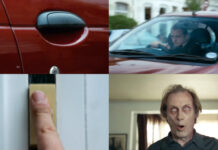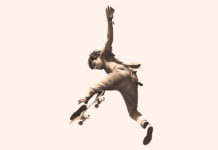A cinematographer (director of photography, DP or DOP), is responsible for recording a film, television production, documentary, music video or any other kind of motion picture piece. Essentially, it’s up to them to translate the script into usable footage. Their primary goal is to capture the director’s vision through composition, lighting, gear choice, camera setting, and other means, such as depth of field, zoom, focus, color, exposure and filtration.
Let’s take a look at some of the main roles and responsibilities of the director of photography.
Decides the film’s visual style
A cinematographer collaborates with the director and other department heads to determine the visual style and feel of the film. The relationship between a cinematographer and the director can take many forms. Some directors will give their cinematographers more artistic freedom, while others will oversee every decision. Regardless of the arrangement, the cinematographer always answers to the director’s vision.
For example, in Ridley Scott’s acclaimed cult film “Blade Runner” (1982), shot by Los Angeles-born Jordan Cronenweth, Cronenweth worked with Scott to realize the style he wanted for the film.
Cronenweth explains, “Ridley felt the style of photography in “Citizen Kane” most closely approached the look he wanted for Blade Runner. This included, among other things, high contrast, unusual camera angles and the use of shafts of light.”
To achieve the film’s futuristic aesthetic, Cronenweth placed many neon lights all over the set. He placed them wherever he could — in shop windows, in buses and even in the shaft of people’s umbrellas. He even put some off-camera to help light the street scenes.

Choosing a lens
As film director Sidney Lumet once said, “Different lenses will tell a story differently.” The type of lens and focal length a cinematographer chooses to shoot with effects the overall look and feel of the scene. When choosing a lens, they will look at its focal length, which we measure in millimeters. Common wide angle lenses include 18mm, 24mm and 27mm. People consider a 50mm lens as “standard,” and many believe it to be equal to what the human eye sees. These lenses are popular amongst many directors and cinematographers because they help inform the audience where the scene is, who is in it and what’s around them. Typically, they allow you to see more of the background with more of the image in focus.
Common long focal lengths include 85mm, 100mm and 135mm. Longer lenses compress the background and often have a more shallow depth of field. Cinematographers use them to isolate a person, focusing the viewer’s gaze on a particular subject.
Cinematographers will work with the director to determine what focal length is best for the scene they’re shooting.
Composition and framing
A cinematographer is responsible for deciding what type of cameras, camera lenses, camera angles and camera movements are best to bring the director’s vision to life.
Spike Lee’s “Do The Right Thing” (1989) was shot by Lee’s long-time collaborator Ernest Dickerson. Dickerson emphasized a character’s power or powerlessness by executing either low angle shots and high angle shots. He multiplied the power of the film’s larger-than-life character, Radio Raheem, by filming him from a low angle. Likewise, Dickerson shot the film’s pizza shop owner, Sal, from a high angle to make him feel less significant.
As the film professes, and the tension heats, Dickerson shoots the soon-to-be warring characters with a Dutch tilt, giving the viewer the feeling of chaos, terror and anger.
Lighting
While the cinematographer operates the set’s cameras, they also oversee the set’s lighting. Cinematographers on larger sets work closely with the head of the electrical department, known as the gaffer, to create, manipulate and control light to create the desired mood.
How the cinematographer lights a film greatly affects the look and feel of the film. For instance, when working on “The Godfather” in 1972, Cinematographer Gordon Willis decided to light the film differently from any other film at the time. Most studios at this time drenched their films with evenly lit scenes at this time in history. However, characters, when in close-ups, often had an eye light cast across their face to accent their eyes. This technique clearly showed their emotions. Willis went the opposite way and painted with shadows to show the dark side of these gangsters’ soles. He created shadows to hide characters’ eyes or even half their face using a high or sidelight.

The film almost didn’t see the light of day because its studio was horrified by its usage of shadows and darkness. Ironically, the film went on to win three Academy Awards and became one of the highest-grossing films to date.
Attending rehearsals
The director of photography attends rehearsals with the director and the actors to understand the blocking — how the characters move through a scene and interact with their environment. They also plan the scene’s staging — the placement and the camera’s movement in relation to the blocking. The cinematographer, director and actors often engage in a complicated dance to figure out the best way to tell the director’s story.
A great example of this complex blocking and staging can be seen in a scene from Martin Scorsese’s “Goodfellas” (1990). three-minute single-take Steadicam shot, Henry Hill (Ray Liotta) leads his date Karen Friedman (Lorraine Bracco) through the back door at the Copacabana night club, downstairs, through multiple dark hallways, through a chaotic kitchen into the club’s interior. Here the maître d’ orders a waiter to carry a table to the front of the club for the gangster and his date. Every time we need to see either character’s face or the face of an extra, the lighting is perfect. Extras continually jet between the moving camera and the actors as they proceed to their destination. It’s extraordinarily engaging.
“That Copa shot is still famous among moviegoers and legendary for thousands of Steadicam operators and for good reason: it’s perfect!” Garrett Brown, cinematographer and inventor of the Steadicam, said of Steadicam operator Larry McConkey’s “Copa shot.”
Deciding what aspect ratio to use
The cinematographer will discuss with the director which aspect ratio to shoot the film with. The term aspect ratio describes the mathematical relation between the horizontal side of the screen image and the vertical. The ratio used for our modern-day television sets is 16×9. This means that the proportion between width and height will always be 1.78 to 1, usually written as 1.78:1. Although this might be the most common aspect ratio today, it’s not the only one. “2001: A Space Odyssey” (1968) was shot with a ratio of 2.20:1, while “How the West Was Won” (1962) was shot in 2.59:1. “Ben Hur” (1959) went even wider with an aspect ratio of 2.76:1.
Wes Anderson took it a step further with “The Grand Budapest Hotel” (2014). Anderson decided to employ a specific aspect ratio for each timeline in the movie. The film starts in 1932 with an aspect ratio of 1.37.1. 1968 scenes were shot in 2.35:1 and the modern-day scenes were framed in a 1.85:1 ratio.
The responsibilities of a cinematographer are endless
The responsibilities of a cinematographer are vast and varied. We have not even touched on some, such as shot size, aperture decisions, and focus choices. You can learn more about the many roles of the director of photography by reading books, watching YouTube videos or attending film school. You can also learn about the role the way most cinematographers have learned in the last 100 plus years: by working your way up the hierarchy of the camera department.








